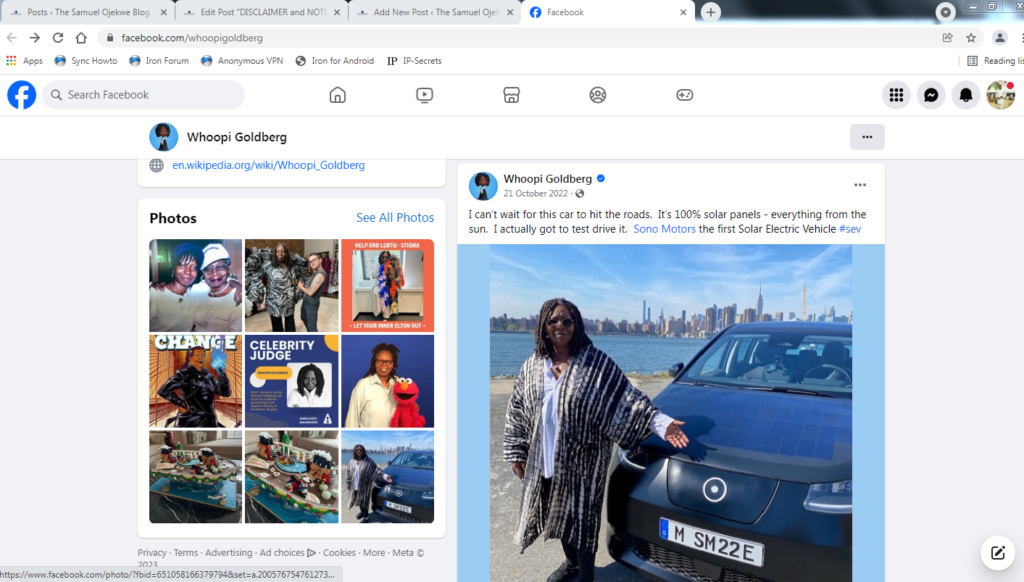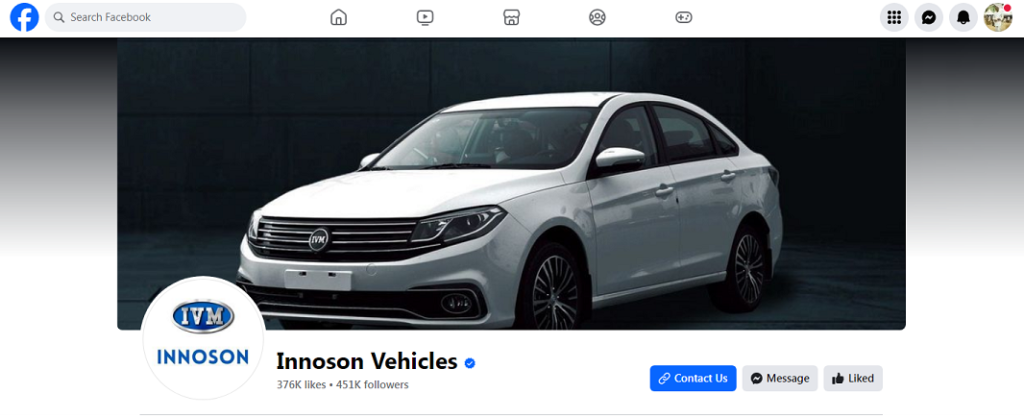

back in the day
circa 1970 A.D to 1980 A.D
( .. and probably earlier
in the period
circa 1950? A.D to 1969 A.D )
as well as in the period
circa 1980 A.D to 1989 A.D
most of the folks who owned cars in Nigeria
owned brand new cars
i.e
they owned cars that they purchased directly from
■ car retail outlets
■ car manufacturers
in Nigeria
and/or abroad

and were
■ the first users of those cars
■ the first owners of those cars.
there were some folks who owned cars that
were
▼ in the parlance of the 1950? A.D to 1989 A.D period
▼ in the word usage of the 1950? A.D to 1989 A.D period
second-hand vehicles
i.e
cars / vehicles that had been owned and used by someone else
before
being re-sold to them
however,
such folks did not constitute the greater majority of car owners
in the period 1950? A.D to 1989 A.D
and
most car owners in the period 1950? A.D to 1989 A.D
in Nigeria
■ were the first users of those cars
■ were the first owners of those cars.
in this period
cars were seen as both
a status symbol
and
a critically important equipment / tool to have.

the value of the automobile / car / motor vehicle
has
been demonstrated severally
over the years
in Nigeria
▲ in the individual lives of Nigeria residents
▲ in the collective existence of Nigeria residents
however,
there has also been
since circa 1989 A.D
.. when the Nigeria Administration in response? to
■■ calls? from and by the IMF ( International Monetary Fund )
that Nigeria should take an IMF loan
( even though Nigeria did not see a need to do so ??? )
and
■■ averments? by some Aryans .. Caucasians .. Europeans
( — some of which averments were,
according to rumours,
carried in some Nigeria mainstream media at the time — )
that the Nigeria currency i.e the Nigeria Naira was too strong
began the implementation of,
( in co-joint action with a rejection of the IMF loan offer )
▼ a de-valuation of the Nigeria Naira
▼ a home-grown SAP ( Structural Adjustment Programme )
an emergent, horrendous and increasing inability of
the financially average Nigeria resident
.. and in instances, many financially above-average Nigeria residents ..
to buy brand new cars in the Naira currency
as the continuing? de-valuation of the Naira
( .. comparative to the US Dollar and the UK Pounds Sterling .. )
led to
.. and has continued as at date October 2023 i.e [ 2023 – 1989 = ] 34 years later
to lead to
( among other observations )
■▼ increases in the costs of goods and services
in Naira terms and in Nigeria
i.e inflation
■▼ upwardly spiralling inflation
including astronomical increases in the costs of brand new cars
in Naira terms and in Nigeria

leading to a survivalist? scenario
where-in
the financially average Nigeria resident
.. and in instances, many financially above-average Nigeria residents ..
seeing that he/she/they is/are no longer able to buy brand new cars
at their astronomically increased / inflated prices
in Naira terms and in Nigeria
have turned to
have resorted to
have taken recourse to
buying
▼ second-hand cars
▼ fairly-used cars
imported mostly from
Western Europe and the U.S.A.
as such cars are cheaper and therefore more affordable
than brand new cars.
these
▼ second-hand cars
▼ fairly-used cars
imported mostly from
Western Europe and the U.S.A.
are generally referred to across Nigeria as
“Tokunbo” cars
( ■ P.S : the word Tokunbo is pronounced To-Koon-Bor.
it is a Yoruba tribe language word.
Tokunbo is actually a personal name in Yoruba-land, Nigeria
often given to children who are born abroad and
the fuller version of the name is usually either
Adetokunbo or Olatokunbo?
which names are often shortened in conversations to either
Toks or Toksy )

from a socio-economic perspective
from a social perspective
from a sociological perspective
from an economic perspective
it would seem
that
given the observation and thus the veritable reality
that
most car owners i.e 80% – 90% or more of car owners
in Nigeria
in the period 1950? A.D to 1989 A.D
■ were the first users of those brand new cars
■ were the first owners of those brand new cars
while
most car owners i.e 80% – 90% or more of car owners
in Nigeria
in the period 1989 A.D till date 2023 A.D
■ are users of second-hand “Tokunbo” cars
■ are owners of fairly-used “Tokunbo” cars
it is a derivable inference
that
the general standard of living
and
the general quality of life
for Nigeria residents
was higher
for
most Nigeria residents i.e for 80% – 90% or more of Nigeria residents
in the period 1950? A.D to 1989 A.D
than it has been
for
most Nigeria residents i.e for 80% – 90% or more of Nigeria residents
in the period 1989 A.D till date 2023 A.D.

whatever.
back to the central theme of this discourse
i.e
leaving aside the
■ decreased quality of being and decreasing quality of being
of cars owned by Nigeria residents
over the period 1950? A.D till date 2023 A.D
■ the linked decreased commodity value
of cars owned by Nigeria residents
over the period 1950? A.D till date 2023 A.D
it can be averred that

in the period 1950? A.D till date 2023 A.D
Nigeria residents have seen
developments and changes linked to the use of the
auto-mobile .. car .. motor-vehicle .. motor-car
e.g
▲ the change in 1973? from right-hand drive to left-hand drive vehicles and road usage
▲ the entree of cars with a fibre-glass body
e.g
the Daewoo car at a time


▲ the clearly greater durability
( .. within the context of Nigeria usage,
viz : panel-beating repair works on the body frame of accidented vehicles .. )
of cars with a more metallic body framework

▲ the usage .. and disappearance .. of some spectacular vehicles
e.g
the Citroen motor-car with a bouncing? break mechanism


▲ the emergence in Nigeria of some motor car assembly lines
e.g
▼ Peugeot ( from France )
▼ Volkswagen ( from Germany )
and the eventual shut down of those motor car assembly lines
reference
▼ Peugeot
in Kaduna, North-Central Nigeria
which used to assemble the Peugeot 504 and Peugeot 505 in Nigeria
▼ Volkswagen
in Lagos, South-Western Nigeria
which used to assemble the Volkswagen Beetle in Nigeria
▲ the more recent emergence in Nigeria of at least one motor car assembly line
which unlike
▼ Peugeot Automobile of Nigeria ( PAN )
that assembled cars with an Western Europe brand name
( Peugeot – – from France )
and
▼ Volkswagen of Nigeria ( VON )
that assembled cars with an Western Europe brand name
( Volkswagen — from Germany )
assembles motor vehicles
with a more Nigeria-nized sounding brand name
reference
Innoson
assembled in South-Eastern Nigeria



▲ the entree? of electric buses and electric cars


▲ the proposed? entree?
.. as at date October 2023 A.D ..
into mainstream Nigeria usage of
motor-cars and vehicles powered by Compressed Natural? Gas ( CNG )
and not powered by petrol / gasoline
leading safety conscious pundits to rumour
that
if Nigeria residents do not abide by the Health & Safety guidelines
for the usage of such vehicles
the consequences may be disastrous



▲ and in the instance of the post on social media
by Whoopi Goldberg
regarding a solar electric vehicle
the emergence of
solar electric vehicles
into the world space
which brings to the central theme
of this post,
namely that :
at a guess,
the vehicle in the photo with Whoopi Goldberg


( .. and
this sort of vehicle .. )
not just essentially powered
with energy directly from the sun ( solar energy ) ?
but
in actual? fact?
in actual? reality?
CONSISTENTLY powered with
energy from the sun ( solar energy )
via
the solar panels
which suggests
that
the battery of the car / automobile
.. if it has one ..
can be recharged? directly from the sun
is likely to be very popular
and
very much in demand
around the world
particularly in
the more tropical parts of the world
where abundant sunshine is part of the natural weather condition

unlike the
new? experimental? not-solar electric car
which seems
to need
to be taken to a charging point from time to time
and which
.. if that is the reality regarding the workings of the not-solar electric motor vehicle ..
both requires that : ![]() the owner / user of the not-solar electric car needs
the owner / user of the not-solar electric car needs
to have
.. or have access to ..
a power point where the charging can be done.
( at this initial stage(s)
of the use of the not-solar electric vehicle globally
it is not general mainstream public information if
a generator set can


be used to perform this function
in countries where 24 hours every day electricity
is not
a standard given. ) ![]() the owner / user of the not-solar electric car needs
the owner / user of the not-solar electric car needs
to make out the time
.. i.e create a timing arrangement ..
during which the electric vehicle can be recharged.

it is thus rather self-evident
that
the solar panels are clearly a plus
as
their presence suggests
that
not only can
the solar [electric] vehicle be powered / re-powered / re-empowered
while it ![]() is being driven
is being driven
or ![]() simply just parked outside
simply just parked outside
the need to create special? time to recharge the vehicle
is completely removed.
generally speaking,
it often seems that
the entire concept of a car / vehicle that does not run on petrol
seems to be linked to an attempt by the ![]() major car / vehicle manufacturers of the world
major car / vehicle manufacturers of the world ![]() major car / vehicle manufacturing countries of the world
major car / vehicle manufacturing countries of the world
to find an alternative to
or
to completely remove
petrol / gasoline
( .. or diesel
in the instance of the bigger / larger vehicles e.g trucks .. )
as a requirement for the running / operation(s) of
a car / vehicle / bus / truck
and
this may be a worrisome issue in the emerging future
for those countries of the world
e.g Nigeria
which depend hugely on sale(s) of their crude oil to generate revenue
for their countries.
some of this sort of countries are
third world countries / developing countries
and
while those of them that have a challenge
with providing electricity
need to continue to look at ways of improving
their overall electricity generation and electricity distribution
since as at today October 2023
24 hours regular, reliable, affordable electricity supply nationwide
is clearly
a fundamental infrastructure prerequisite and requirement
in any country
any where in the world
regarding
▲ manufacturing
▲ production
▲ industrialisation
▲ industrial processes
▲ comfort and functionality in the basic office environment
▲ modern everyday living
▲ etc
it is very likely
that
among the populace
of such countries

a solar powered [electric] vehicle
will decidedly be a winner
.. if and ..
whenever it comes into
general mainstream global production
and
general mainstream global utilization / use.
[ TO BE CONTINUED ]
DISCLAIMER and NOTICE OF DISCLAIMER
VIRTUALLY ALL THE PHOTOS USED IN THIS BLOG WERE SOURCED FROM AND HAVE BEEN SOURCED FROM THE INTERNET.
WE DO NOT OWN OR HOLD THE COPYRIGHT(S) TO THE PHOTOS AND WE DO NOT CLAIM THAT WE OWN OR HOLD THE COPYRIGHTS TO THE PHOTOS.
ANY INFRINGEMENT ON COPYRIGHT IS UNINTENDED AND UNINTENTIONAL.
IMMEDIATELY WE BECOME AWARE OF ANY INFRINGEMENT WE WILL DELETE SUCH PHOTOS TOTALLY, COMPLETELY AND PERMANENTLY FROM THE BLOG.

![]()
![]()
![]()
![]()
![]() Whoopi Goldberg
Whoopi Goldberg ![]()
![]() : Greetings and Respects, Whoopi.
: Greetings and Respects, Whoopi.
at a guess,
this vehicle
( .. and
this sort of vehicle .. )
powered with energy directly from the sun
( solar energy ) ?
and
in fact
CONSISTENTLY powered with energy from the sun ( solar energy )
via the solar panels which suggests
that
the battery of the car / automobile
.. if it has one ..
can be recharged? directly from the sun
is likely to be very popular
and
very much in demand
around the world
particularly in
the more tropical parts of the world
where abundant sunshine is part of the natural weather condition
unlike the
new? experimental? not-solar electric car
which seems to need to be taken to a charging point from time to time
and which
.. if that is the reality regarding the workings of the not-solar electric motor vehicle ..
both requires that : ![]() the owner / user of the not-solar electric car needs to have .. or have access to .. a power point where the charging can be done.
the owner / user of the not-solar electric car needs to have .. or have access to .. a power point where the charging can be done.
( at this initial stage(s) of the use of the not-solar electric vehicle globally
it is not general mainstream public information if
a generator set can be used to perform this function
in countries where 24 hours every day electricity is not a standard given. ) ![]() the owner / user of the not-solar electric car needs to make out the time .. i.e create a timing arrangement .. during which the electric vehicle can be recharged.
the owner / user of the not-solar electric car needs to make out the time .. i.e create a timing arrangement .. during which the electric vehicle can be recharged.
Whoopi ohbee nm ( obi nm ) ( obi m ) ( obim ),
the solar panels are clearly a plus
as
their presence suggests that
not only can the solar [electric] vehicle be powered / re-powered / re-empowered while it ![]() is being driven
is being driven
or ![]() simply just parked outside
simply just parked outside
the need to create special? time to recharge the vehicle is completely removed.
Whoopi nm,
the entire concept of a car / vehicle that does not run on petrol
seems to be linked to an attempt by the ![]() major car / vehicle manufacturers
major car / vehicle manufacturers ![]() major car / vehicle manufacturing countries of the world
major car / vehicle manufacturing countries of the world
to find an alternative to
or
to completely remove
petrol / gasoline
( .. or diesel
in the instance of the bigger / larger vehicles e.g trucks .. )
as a requirement for the running / operation(s) of
a car / vehicle / bus / truck
and
this may be a worrisome issue in the emerging future
for those countries of the world
e.g Nigeria
which depend hugely on sale(s) of their crude oil to generate revenue
for their country.
some of this sort of countries are
third world countries / developing countries
and
while those of them that have a challenge
with providing electricity
need to continue to look at ways of improving
their overall electricity generation and electricity distribution
it is very likely
that
among the populace
of such countries
a solar powered [electric] vehicle
will decidedly be a winner
.. if and whenever it comes into general mainstream global production and utilization / use.

